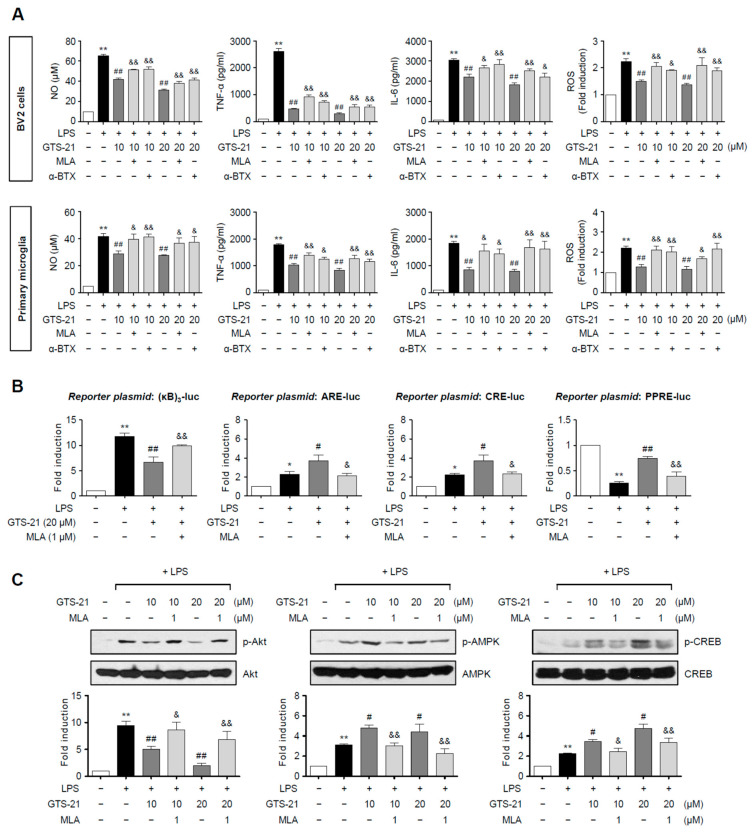Figure 5.
α7 nAChR antagonists reversed the anti-inflammatory effects of GTS-21 in LPS-stimulated microglia. (A) The effect of methyllycaconitine (MLA) and α-bungarotoxin (α-BTX) on the production of NO, TNF-α, IL-6, and ROS in LPS + GTS-21-treated BV2 cells and primary microglia (n = 3–4 per group). Cells were pre-treated with MLA (1 μM) or α-BTX (0.01 μM) for 1 h, and then GTS-21 (10, 20 μM) for 1 h, followed by the treatment with LPS (100 ng/mL for BV2, 10 ng/mL for primary microglia) for 16 h. The levels of NO, TNF-α, and IL-6 released into the medium, as well as intracellular ROS, were measured. (B) The effect of MLA on NF-κB, Nrf2, CREB, and PPARγ reporter gene activities (n = 3–4 per group). BV2 cells were transfected with the reporter plasmid and then treated with MLA (1 μM) for 1 h, followed by GTS-21 (20 μM) and LPS (100 ng/mL). Cells were harvested after 6 h of LPS treatment and the reporter gene assay was carried out. (C) BV2 cells were pre-treated with MLA (1 μM) for 1 h, and then GTS-21 (10, 20 μM) for 1 h, followed by the treatment with LPS for 30 min to determine p-Akt, p-AMPK, and p-CREB levels by western blot analyses (n = 3–4 per group). The data are presented as the mean ± SEM. * p < 0.05, vs. control group; ** p < 0.01, vs. control group; # p < 0.05 vs. LPS-treated group; ## p < 0.01 vs. LPS-treated group; & p < 0.05 vs. LPS + GTS-21-treated group; && p < 0.01 vs. LPS + GTS-21-treated group.

